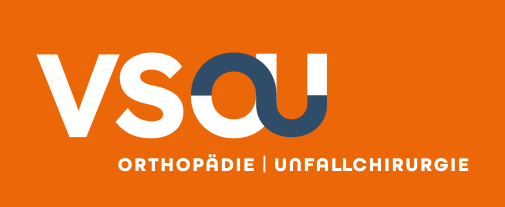Ihre Suche ergab 2 Treffer
Evolution der individualisierten Total-Knieprothese mit 3D-Technologie
Zusammenfassung:
Individuelle Knieimplantate und vornavigierte Einweginstrumente haben das Potenzial, viele der Mängel herkömmlicher Standard-Knieimplantate zu beheben. Aktuelle Systeme hinterlassen eine Lücke in Bezug auf Passform, Kniekinematik und Patientenzufriedenheit, die in der Knieendoprothetik nach wie vor bestehen bleibt. Die individualisierte Knieendoprothetik kann die in der Knieendoprothetik vorhandenen anatomischen Variationen und morphologischen Nuancen berücksichtigen.
Summary: Individual knee implants and pre-navigated disposable instruments have the potential to correct many of the deficiencies of conventional standard knee implants. Current systems leave a gap in terms of fit, knee kinematics and patient satisfaction that remains in knee endoprosthetics. Individualized knee endoprosthetics can take into account the anatomical variations and morphological nuances present in knee endoprosthetics.
Individualisierte Knieendoprothetik: der patientenspezifische Teilgelenkersatz
Zusammenfassung: Die Implantation einer Knieprothese stellt eine Standardoperation für Patienten mit fortgeschrittener Arthrose dar und ist zu einer der häufigsten und gleichzeitig erfolgreichsten Operationen im Bereich der chirurgischen Orthopädie geworden. Dennoch zeigt sich jeder 5. Patient mit dem Eingriff unzufrieden. Berichtet wird v.a. über Schmerzen und Bewegungseinschränkungen, die u.a. aus einer suboptimalen Passform der Prothese resultieren können. Um dies zu vermeiden, sollte die Endoprothese dem ursprünglichen Kniegelenk in seiner Anatomie und physiologischen Kinematik möglichst nahekommen. Die patientenindividuelle Knieendoprothetik stellt hierbei eine sehr interessante und zukunftsweisende Möglichkeit dar: Erstmalig wird die Prothese an den individuellen Knochen angepasst und nicht der Knochen an die Prothese. Dadurch ergibt sich die Möglichkeit, die ursprüngliche Anatomie des Kniegelenks weitgehender als bisher zu erhalten, Schmerzen verursachende Überstände zu verringern und die ursprüngliche Kinematik bestmöglich wiederherzustellen. Zudem werden nur die Kompartimente ersetzt, die von Arthrose zerstört wurden, und es kann Knochen-sparend gearbeitet werden. Sowohl die Prothese als auch die zur Implantation und zur exakten Ausrichtung verwendeten Instrumente werden patientenindividuell anhand einer auf CT-Daten basierenden 3D-Rekonstruktion geplant und dann im 3D-Druckverfahren hergestellt. Das Spektrum möglicher Versorgungen umfasst mediale und laterale unikondyläre Versorgungen, mediale und laterale bikompartimentelle Versorgungen und totalendoprothetische Versorgungen, die sowohl kreuzbanderhaltend als auch kreuzbandsubstituierend ausgeführt werden können. Die bisher vorliegenden Ergebnisse sind insgesamt sehr vielversprechend. Abschließende Aussagen können jedoch wegen noch fehlender Langzeitergebnisse nicht getroffen werden.
Summary: Implanting a knee prosthesis is a standard operation for patients suffering from advanced knee osteoarthritis and has become one of the most frequent and at the same time most successful operations in orthopaedic surgery. However, one fifth of the patients are not entirely happy with their outcome. There are reports about persisting pain and limitations in range of motion, which may result from a sub-optimal matching between the implant and the anatomy of the knee. To avoid these disadvantages, the implant should match the original knee joint anatomy and physiological kinematics as good as possible. In this context, patient-individual implants are considered as an interesting and trend-setting alternative. For the first time, the implant is adapted to the individual bone instead of adapting the bone to the implant. This leads to the possibilities of preserving the original knee joint’s anatomy more extensively, to reduce pain caused by implant overhang and to restore the original kinematics. Further, only those compartments are substituted that have been destroyed by arthrosis and more bone can be preserved. The implant as well as the instruments that are necessary for the exact arrangement and implantation are planned patient-individually by means of a CT-data based 3D-reconstruction and then manufactured by 3D-printing. The spectrum of possible implants comprises medial and lateral bicompartmental implants as well as total knee replacements that may be performed either cruciate ligament-preserving or cruciate ligament-substituting. However, concluding statements cannot be made yet since any long-term data are not available yet.
